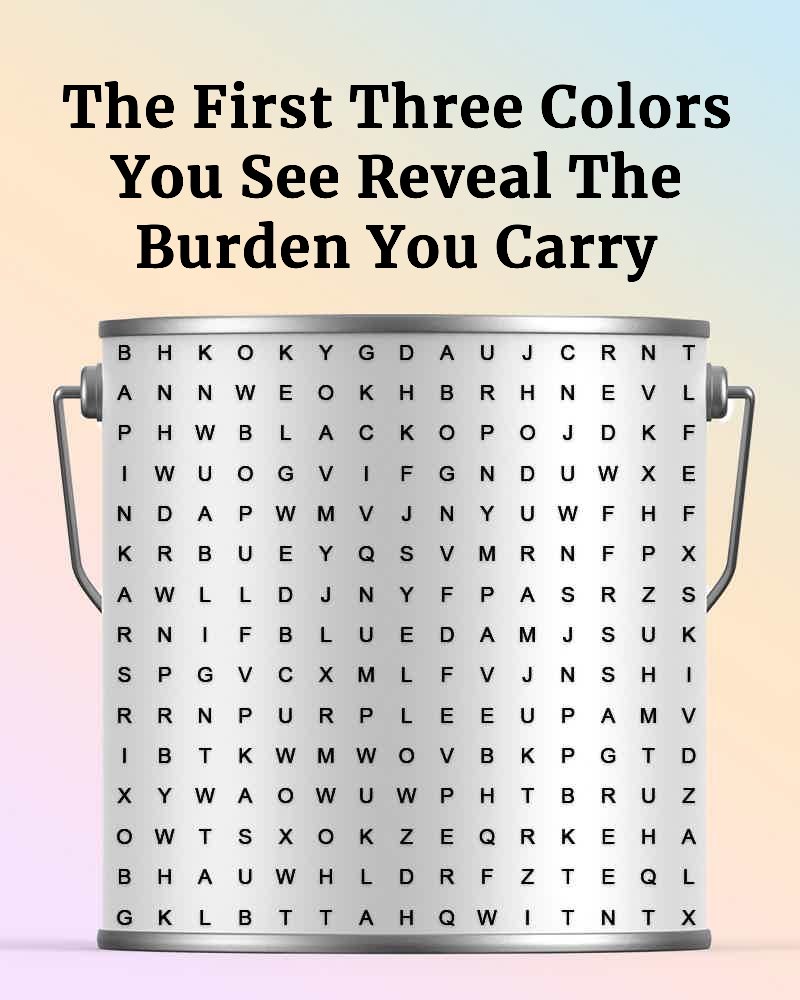What the First Three Colors You See Say About the Emotional Weight You Carry
Take a moment.
Look around you.
What are the first three colors your eyes are drawn to?
Is it fiery red? Soothing blue? Mysterious purple?
Maybe it’s the gentle whisper of white, or the grounded strength of brown?
Whatever caught your eye first—don’t dismiss it.
Because those colors aren’t just decorating your world.
They may be echoes of something deeper—something your heart hasn’t said out loud yet.
Let’s explore how color can be a mirror to the burdens we carry, the hopes we hide, and the healing we long for.
The Emotional Language of Color
Color doesn’t just live in paint swatches or fashion trends.
It lives in our memories, our wounds, our celebrations, and our longings.
Red burns with duality: it’s both love and war. It shows up when you’re fighting for passion or struggling through conflict. If red speaks to you, maybe you’re carrying a fire—either burning for something… or burning out.
Blue is the color of contradictions. It’s peace… but also sorrow. It may reveal your deep need for calm—or your unspoken sadness. Seeing blue might mean you’re holding onto grief that no one sees, or searching for serenity in a chaotic world.
Purple is the phoenix: a color of transformation. If this one calls to you, perhaps you’re in the middle of letting go, reshaping, reinventing. Change is heavy—and purple knows that weight well.
White can whisper different things depending on where you’re from. In the West, it’s seen as purity, beginnings, clarity. But in many Eastern cultures, it’s worn for mourning, for what’s been lost. If white is your color today, maybe you’re trying to start over… while quietly grieving something you had to leave behind.
Why Your Brain Cares About Color (Even If You Don’t)
Color isn’t just aesthetic—it’s neurological.
When you see certain colors, your brain releases hormones. Dopamine, cortisol, serotonin—they all come out to play depending on the hue.
It’s why yellow might make you smile…
Why gray days feel heavier…
Why you suddenly want to paint your room forest green and sit there like a tree in therapy.
Studies show that colors affect mood, focus, even physical healing. That’s why hospitals choose blues and greens—not just for aesthetics, but for calm. Why AI is now using color recognition therapy in emerging mental health tools.
In short: color knows your secrets.

Color Has Culture, Too
Don’t forget—color means different things to different hearts.
Red is danger in the West, but luck and joy in China.
White is a wedding dress in America, but a mourning robe in Japan.
Black can be powerful, elegant—or a symbol of grief, depending on your lens.
So if a color stirs something inside you, don’t ask just what it means—ask what it means to you.
Color as a Tool for Self-Discovery
Want to go deeper?
🟠 Notice which colors you buy, wear, and decorate with—especially without thinking.
🟠 Reflect on your emotional responses to them. Does green make you feel safe? Does orange make you feel… loud?
🟠 Explore through journaling, art, even therapy. Ask yourself: Why this color? Why now?
Color is like an emotional bloodhound. It sniffs out what words haven’t said yet.
Where It All Begins: The Roots of Color in Our Lives
We’re born into a world of color.
Babies respond to black, white, and red before they even know what “mom” means. Our early memories attach themselves to color like Velcro.
A red toy. A blue blanket. A yellow classroom.
And trauma? Trauma paints in its own palette, too.
Sometimes, the color that comforts you most is the one that once kept you safe.
Healing through color begins by unpacking those silent stories—and deciding which shades we still want to carry forward.
So… What Colors Do You See First?
Are they loud? Quiet? Sad? Wild? Safe?
Whatever they are—they’re speaking.
To your past. To your energy. To your heart.
They may not tell the whole story…
But they know the burdens you’ve been carrying in silence.
And maybe—just maybe—they’re offering you a way to start putting some of it down.
Because in a world constantly trying to define you, maybe color is the one thing that still lets you feel, without asking you to explain.

